When I was seven, my family moved into a crumbling old house in a northern industrial town. Though empty for years, my mother fell in love with it. There was no electricity, gas or running water. Outside was a large wild garden surrounded by dozens of grand old trees.
My bedroom window would never close properly but opened onto a sight so special it remained seared into my mind for more than six decades. Beyond the cracked glass, two huge ancient pear trees, more than twice the height of the house, stood as sentinels. Despite the foul-smelling polluted air, those trees were filled with life, song and light. When each summer fell into autumn, they produced hundreds of mottled green pears which seemed to nourish every living organism for a square mile or more.
Trees are wrapped in and around memories of early childhood and family life. The old garden had horse chestnut, lime, beech, oak and ash. There were plum and apple trees, holly, elder and hawthorn. The best climbing tree was a grand oak whose thick branches reached out over the road and provided both comfy look-out posts and secret hideaways. Together, the great trees formed a protective screen to the smokes and pollutants of nearby chemical works and even now, I remember each one as safe harbour, comfort blanket and friend.
There are few woodlands in this part of Wester Ross, my home today. In our valley, small clusters of relatively young trees grow here and there. Compensation for the lack of tall, big specimens comes from in the form of vast open vistas, grand skies, sunsets and sunrises, mountains and islands. On a clear day, I can see for miles and miles in every direction. Such a thing was impossible from my childhood bedroom window. There, the view was of grey bark, olive-green leaves and palls of smoke.
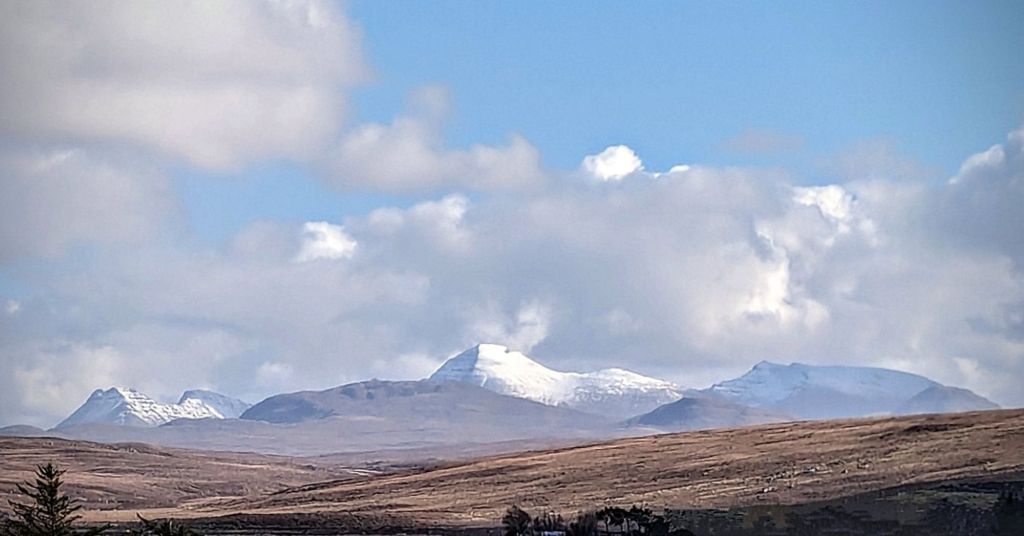
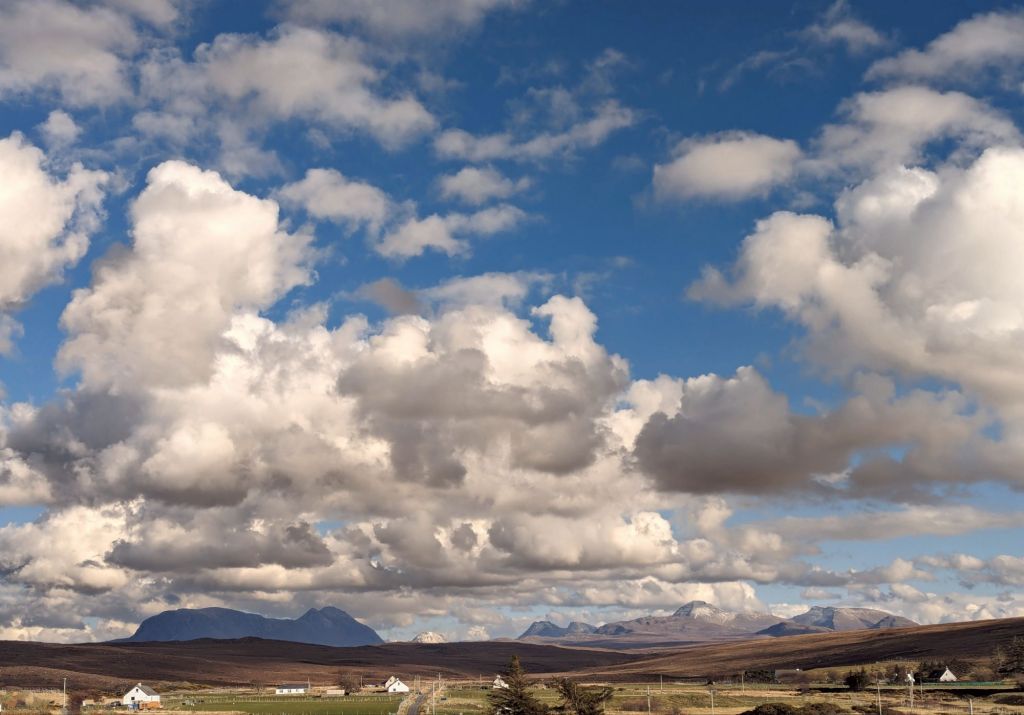
This largely treeless country, once grazed by hundreds of sheep, by cattle and deer, has been slowly changing. A decline in grazing intensity has resulted in more scrub, more heather on the moorland, and more naturally regenerating trees. And parts of Red River Croft too, have been getting wilder. Trees (and shrubs) have begun to spring up in a gentle ‘rewilding’ of the riverbanks. Where once the margins of the river were bowling-green smooth from years of grazing, there is now a jumble of alder, birch and willow saplings, clumps of gorse and myrtle, and here and there, reeds and rushes. When the river is in spate the cola-black and red waters push against the density of plant life and begin to slow. This newly thickening riparian vegetation is already a form of natural flood defence in action.
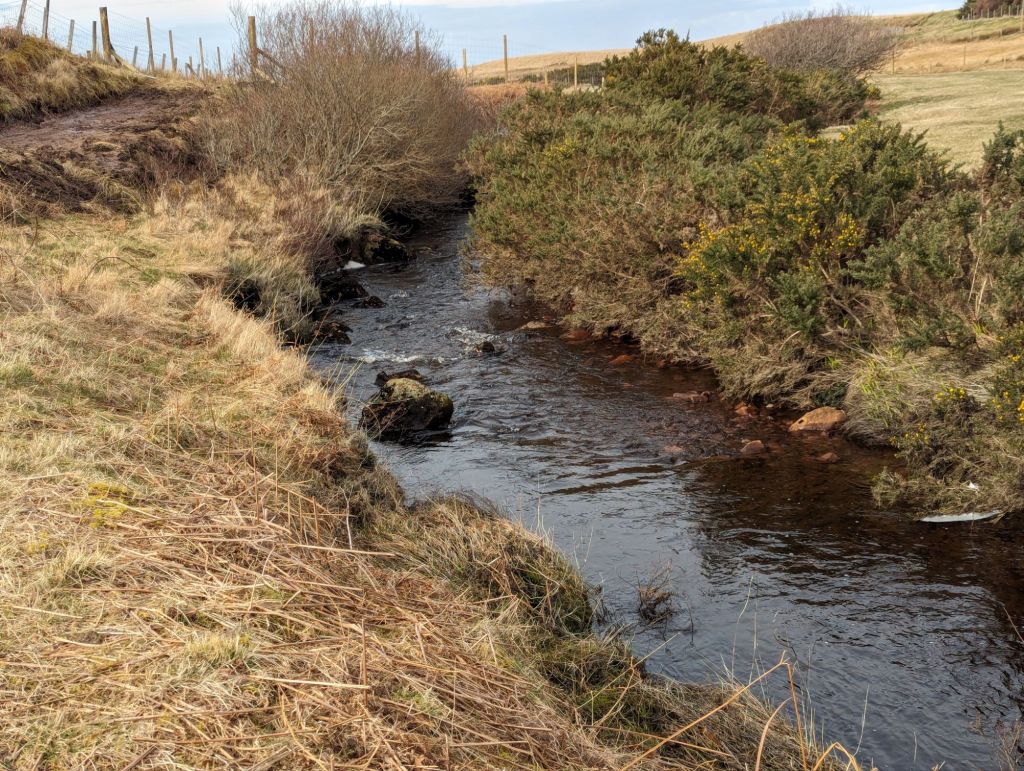
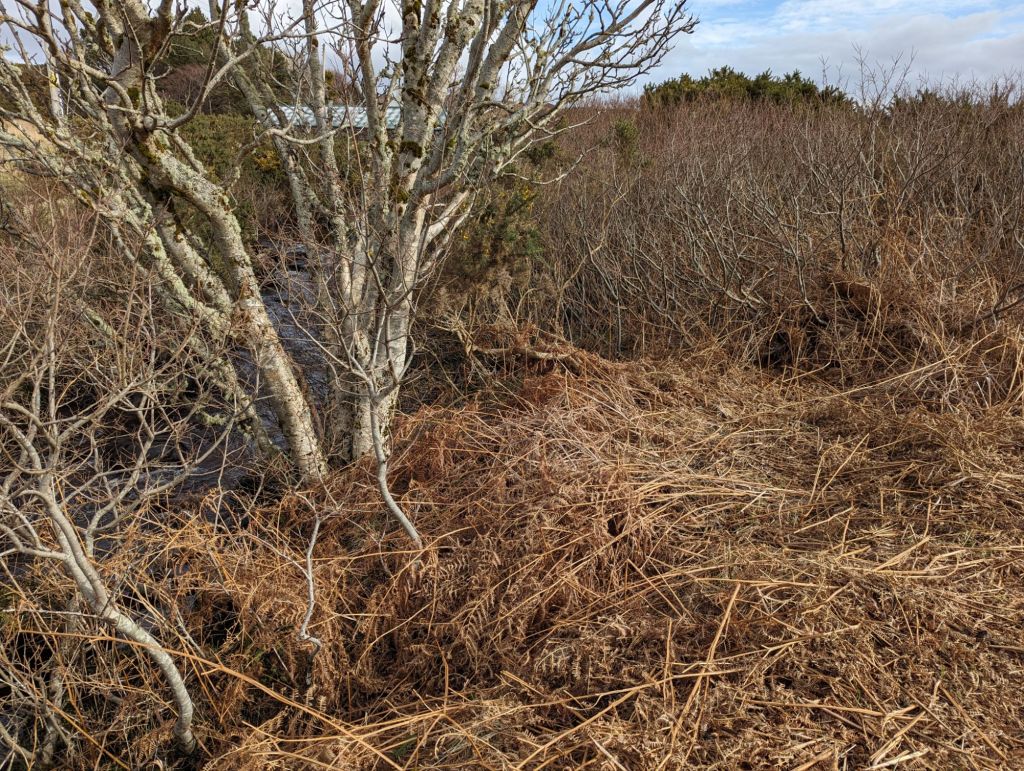
Our croft is not managed for sheep or cattle. We use much of the land for traditional hay* but about 2.5 acres across the river are not harvested. That ground has been lightly grazed by both domesticated and wild animals. Sheep and ponies come to stay at different times during the autumn and winter months, for short spells of ‘mob’ grazing which ultimately benefits both the ground and the hay harvest; deer still roam despite the construction of an enormous fence by the Gairloch Estate**. But for the last year or two, watching the gradual rewilding of the riverbanks, we began to think more and more about trees, about bringing in species that would once have grown in the Erradale Valley before the crofts were established and long before sheep became the mainstay of life here.
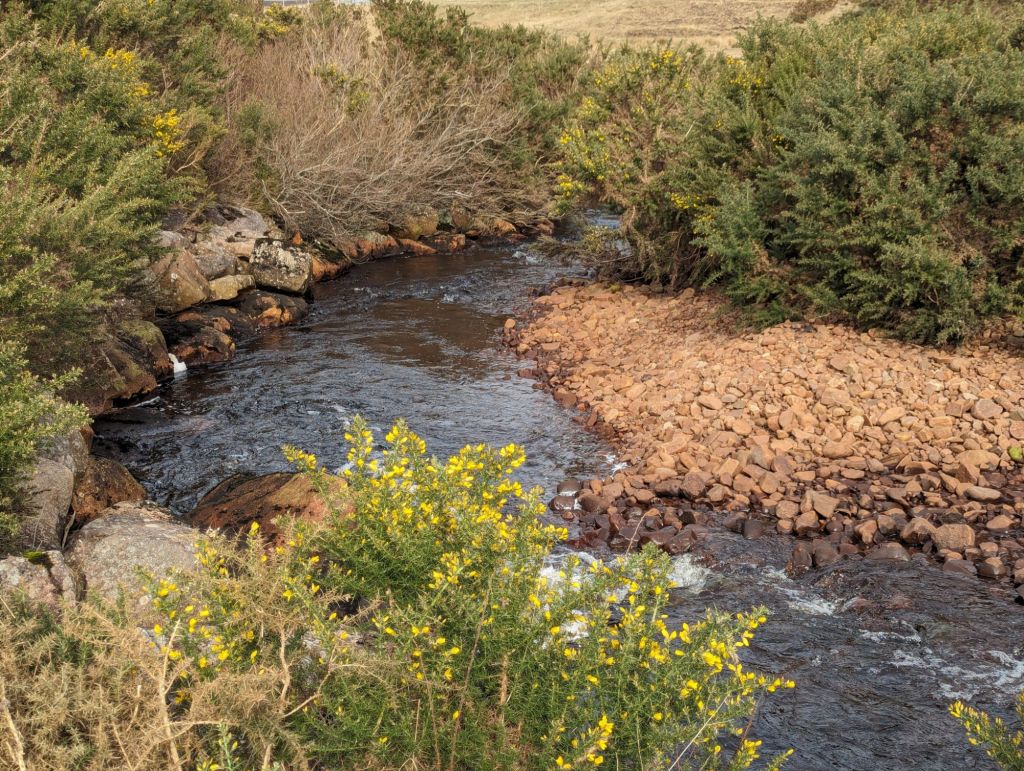
With the help of experts (and a generous grant) from the Woodland Trust we developed plans for the creation of new woodland – a floody wet zone for willow species and alder, and two better drained areas for a mixture of oak, rowan, elder, hazel, blackthorn, crab apple, aspen and birch. The ground had to be prepared or else the job of planting would be almost impossible so Rob spent two weeks clearing rushes in 50mph winds and torrential rain.
Somehow, a small group of deer continued to resist efforts by estate teams to clear them from the in-bye land of the crofting townships. More concerning, the canny creatures appeared to be using our riverbank scrub to rest and sleep. We knew that unless they too were dealt with, any new trees we planted would smell as sweet as freshly baked bread, and draw them in. I began to fret; I had visions of myself, stalked by deer as I bent down to plant every precious new tree, in a strange dreamlike reversal of human and animal behaviour.
We needed to act quickly. Dave from Red Point came and began fencing almost immediately. At the same time the trees arrived – 1000 tiny saplings covered in buds of hope, each one a promise for the future. Rob and I marked out where they would all go. We had thought and thought about what should be planted where, had discussed at length with experts from the Woodland Trust about creating natural swathes of woodland, and now with the ground as ready as it could be, we cut open the winter turf and began to plant.
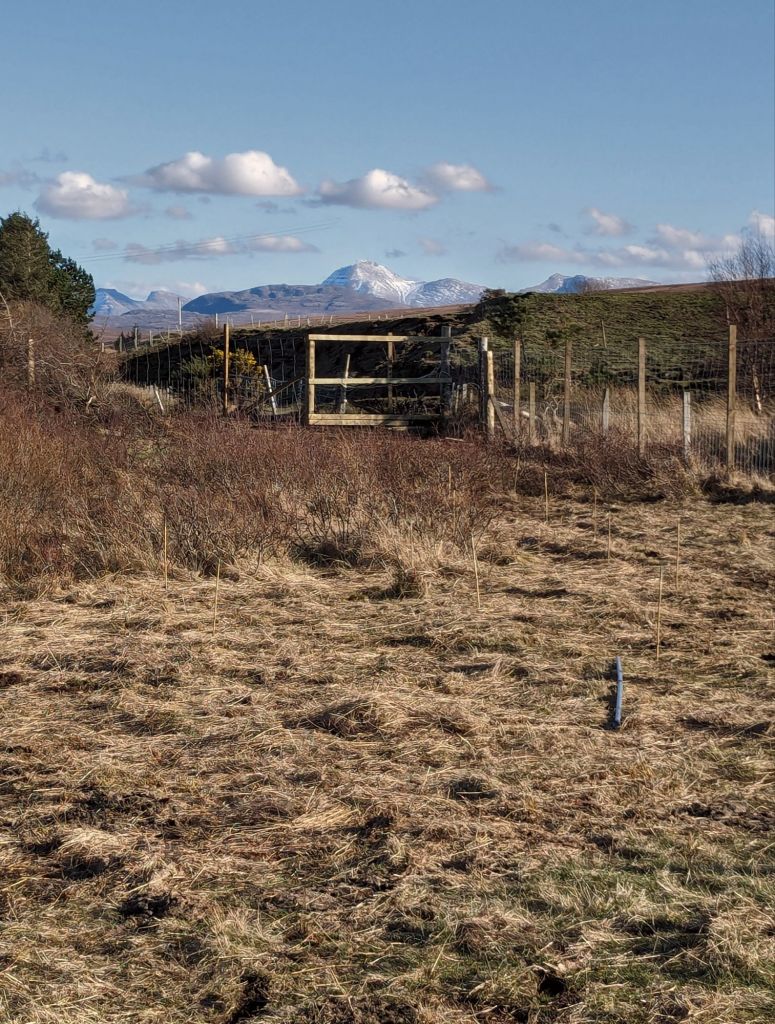
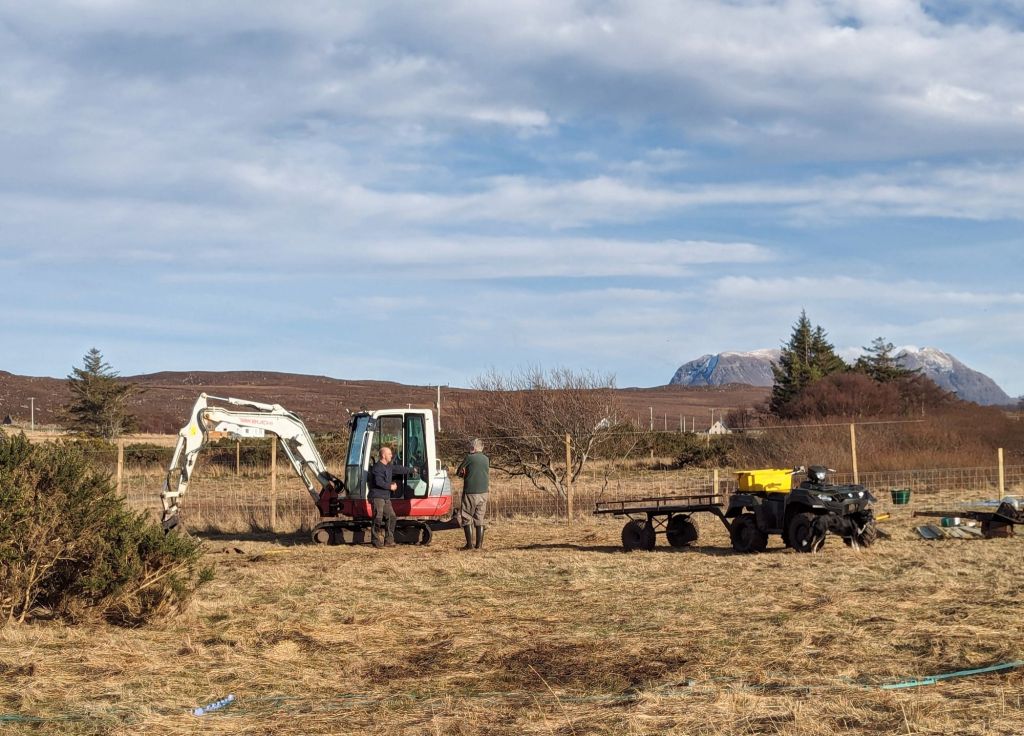
I will be for ever grateful for the weather window. The Northwest Highlands can be so unforgiving at this time of year. Winter will often spill in across the Minches and flay us until our cheeks redden and our fingers freeze, covering the mountains again and again with snow. Storm winds can blow hard and then harder. But although temperatures hovered between freezing and 2oC, and although the gales swept ice crystals and salt up from the shore, the sun shone, birds sang and we planted as hard and fast as we could. Despite the fierce cold, I loved every single minute of it.

Planting trees is backbreaking work when the ground is hard and cold. We carried everything – tools, trees, refreshments, extra clothing, notebooks, camera – back and forth across the river. I found muscles that had long since forgotten what they were for. Rob dug; I bent down to plant. But oh! the profound joy that bubbled up with every single tree placed into the earth. I muttered a wish and a prayer for each one and felt reciprocal blessings and gratitude run back through my fingertips.
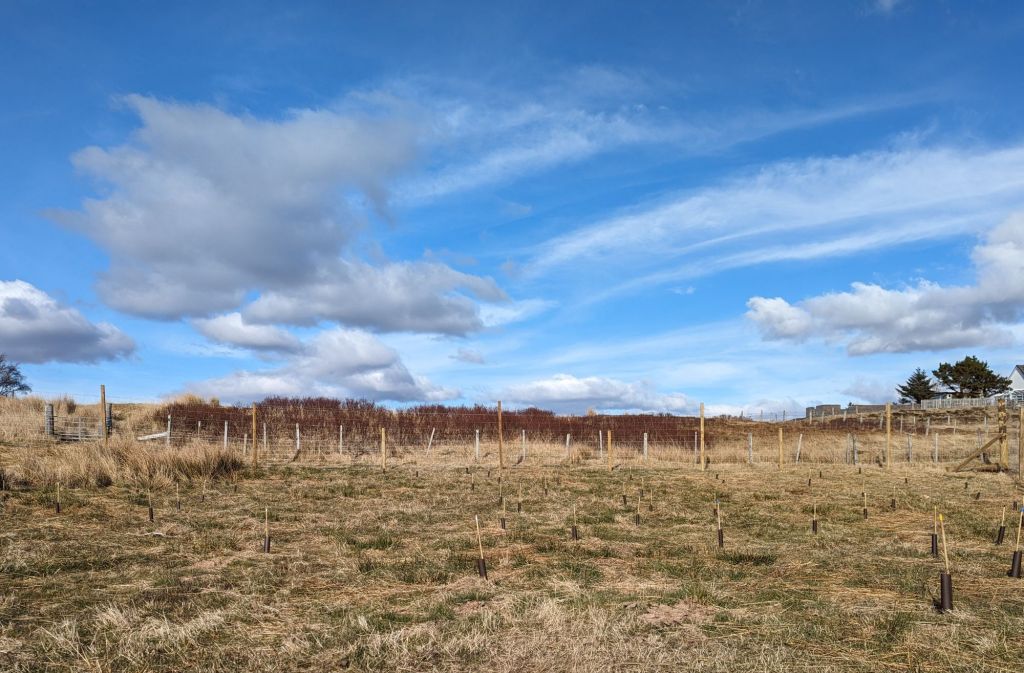
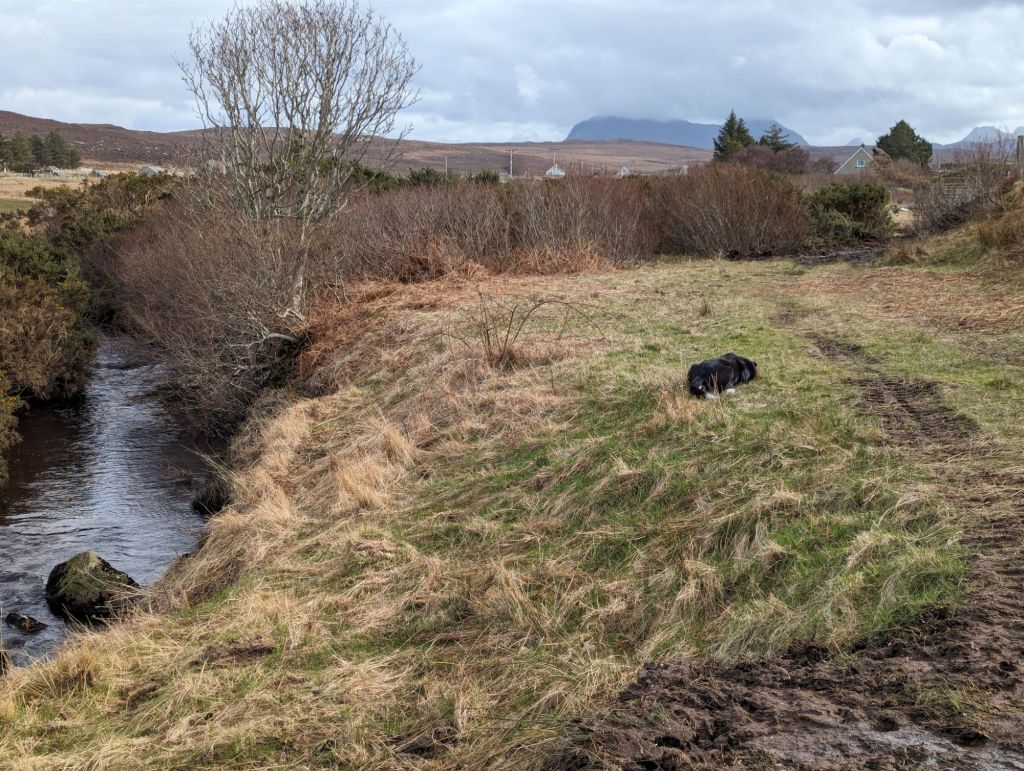
In the clear, cold air, the mountains of Torridon watched us as we worked. Birds flew around us, curious. On three occasions otter spraint appeared close to where we had finished planting the previous day. The scent of soil and turf and river and hill filled our nostrils. As we dug and planted, we re-learned the tiniest details of this land-across-the-river. It was as much as I could do to not cry. While I was poorly, I had simply not been able to ford the river making this precious space out of reach. But now as I planted, my mind remapped every lump, bump and slope, all the nooks and crannies, the frilled edges of the river, the wet patches, the dry, the old ditches and fences. New vistas opened up, ones I had somehow forgotten. The mountains seemed nearer, further, taller, smaller, depending on when I cast them a glance or how brightly the sun danced on their flanks. The river shone and sparkled, rumbling now and again as showers, having fallen in the hills, finally rushed past us towards the sea.
Somehow, the soul of this place felt deeper, the life stronger; somehow the sea felt closer, and the skies brighter. I felt ever more aware of the flow of energy, of the connections between living organisms and the living landscape. And with every single tree, a surge of hope for the future.
Today, I walked back across the river to see if anything had changed, whether any of the trees had been blown away after a few days of bitterly cold and powerful winds. But all was well. The sun broke through scudding clouds of pewter and slate and illuminated a patch of ground. I bent down to inspect the buds now appearing – bright crimson on a bird cherry, livid green on a rowan, rusty brown scales on an oak, plum red on hazel. I will never see our ‘baby’ trees to maturity, but maybe, out of the thousand, one will grow to be as tall as my childhood pear trees with branches strong enough to become a look-out or hide-away for children of the future.
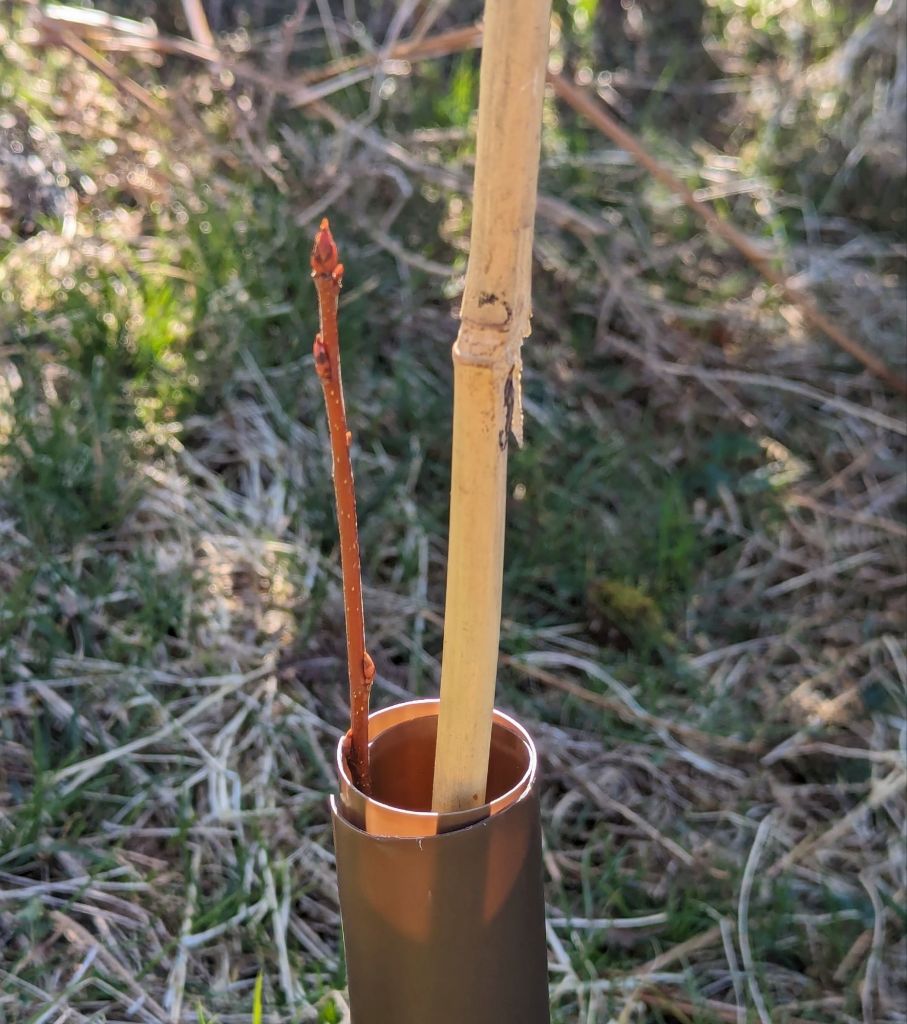
* You can read more about haymaking, land management and rewilding here on the blog: https://notesfromasmallcroftbythesea.wordpress.com/2023/09/23/from-summer-to-the-autumn-equinox/
And in Windswept: Life, Nature and Deep Time published by William Collins: https://www.annieworsley.co.uk/windswept
** The fence encloses the crofting townships of South Erradale, Opinan, Port Henderson and Badachro.


































































































